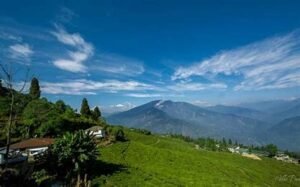Manas National Park is a well-known wildlife sanctuary located in the northeastern part of India. It is situated in the state of Assam, stretching across the foothills of the Eastern Himalayas. This park is recognized for its diverse flora and fauna, and its significance has earned it a spot on the UNESCO World Heritage Site list. Manas is also a designated Tiger Reserve, making it an important conservation area in India.
Location and Geography
Manas National Park lies along the Manas River, which forms part of the boundary between India and Bhutan. The park spans over 1,000 square kilometers and is located in the lower foothills of the Eastern Himalayas. The area is characterized by a blend of hilly terrain, grasslands, and dense forests, making it an ideal habitat for various species of wildlife. The park is also part of the larger Manas Conservation Area, which extends into Bhutan.
Importance of Manas National Park
Manas National Park is considered one of the most ecologically significant regions in the world due to its rich biodiversity. It is home to a wide range of species, including some that are rare and endangered. The park’s unique geographical location allows it to support diverse ecosystems, from tropical forests to alpine meadows. The region plays a crucial role in the conservation of several species, making it an important part of global wildlife preservation efforts.
UNESCO World Heritage Site
In 1985, Manas National Park was designated a UNESCO World Heritage Site for its outstanding universal value. This recognition highlights the park’s exceptional biodiversity and the critical role it plays in preserving endangered species. As a UNESCO World Heritage Site, Manas is acknowledged not only for its natural beauty but also for its importance to the global conservation community. It is one of the few UNESCO sites that also serve as a tiger reserve, which adds to its significance in wildlife conservation.
Tiger Reserve and Conservation Efforts
Manas National Park is a designated Tiger Reserve, which means it is part of India’s Project Tiger initiative. This initiative, launched in 1973, aims to conserve the population of tigers in India. Tigers are an apex predator, and their presence in an ecosystem is a sign of a healthy and balanced environment. The park’s tiger population, though fluctuating over the years, is one of its most iconic features.
Aside from tigers, the park also supports a variety of other species, many of which are endangered. These include the Indian rhinoceros, wild water buffalo, and the clouded leopard. Manas is an essential area for the preservation of these species, many of which rely on the park’s varied ecosystems for survival. Conservation efforts at Manas focus on habitat protection, anti-poaching measures, and promoting sustainable development in nearby areas.
Flora and Fauna
The biodiversity in Manas National Park is remarkable. The park is home to over 500 species of wildlife, including mammals, birds, reptiles, and amphibians. Some of the notable species found in the park include:
- Royal Bengal Tiger: One of the most famous species found in Manas, the Royal Bengal tiger is a symbol of strength and beauty. The park provides a safe environment for these tigers, allowing them to thrive in their natural habitat.
- One-Horned Rhinoceros: The Indian rhinoceros, or one-horned rhinoceros, is an endangered species found in Manas. The park provides a critical sanctuary for these magnificent animals, which face threats from habitat loss and poaching.
- Wild Water Buffalo: Another key species in Manas is the wild water buffalo, which is critically endangered. The park’s wetlands and grasslands offer an ideal environment for these buffalo to survive and reproduce.
- Elephants: Asian elephants are also found in the park, often seen roaming the grasslands. These elephants play a key role in maintaining the ecosystem by helping with seed dispersal and forest regeneration.
The park also has a rich birdlife, with over 300 species of birds, including the endangered Bengal florican. Manas is a paradise for birdwatchers, as it provides a habitat for both migratory and resident species.
Ecosystems of Manas National Park
Manas National Park features several distinct ecosystems, each supporting a unique set of species. These ecosystems include:
- Tropical Rainforests: These forests are dense and humid, providing a home for a variety of species, including primates, tigers, and leopards. The rainforests are characterized by tall trees, thick foliage, and rich biodiversity.
- Grasslands: The grasslands of Manas are home to large herbivores like the Indian rhinoceros and wild buffalo. These open areas also provide grazing grounds for elephants and other animals.
- Wetlands and Rivers: The park’s wetlands and river systems are crucial for many species, including migratory birds and aquatic life. The Manas River, which flows through the park, is particularly important for maintaining the park’s ecosystem.
- Alpine Meadows: The higher altitudes of the park feature alpine meadows that provide a unique habitat for certain plant and animal species, especially during the colder months.
Threats to Manas National Park
Despite its protected status, Manas National Park faces numerous threats to its biodiversity. Poaching, habitat destruction, and human-wildlife conflict are among the most significant challenges. Poaching for animal parts, such as tiger pelts and rhino horns, remains a persistent issue, despite increased law enforcement and anti-poaching efforts.
Another threat to the park’s ecosystem is the encroachment of human settlements. As local populations grow, there is pressure on the surrounding land for agriculture and infrastructure development. This encroachment can lead to habitat fragmentation, making it harder for species to move and find food.
Climate change is also a growing concern. Changes in temperature and rainfall patterns can alter the delicate balance of the park’s ecosystems, affecting the species that depend on them. As temperatures rise, species may have to migrate to higher altitudes or may face challenges in finding food and water.
Role of the Local Community
The local communities surrounding Manas National Park play an important role in its conservation. Many people in these areas rely on the park for their livelihoods, whether through tourism, agriculture, or fishing. Efforts to involve these communities in conservation have proven effective in reducing poaching and promoting sustainable use of resources.
Local communities are encouraged to participate in eco-tourism and sustainable agriculture, which can provide them with an income while also protecting the park’s resources. Education and awareness programs also help locals understand the importance of preserving the park’s biodiversity.
Conclusion
Manas National Park is a unique and vital ecosystem that is home to a wide range of endangered species. Its status as a UNESCO World Heritage Site and Tiger Reserve highlights its global importance in wildlife conservation. However, the park faces many challenges, from poaching to human-wildlife conflict and climate change. To ensure the continued survival of the park’s wildlife, ongoing efforts are needed in conservation, habitat protection, and sustainable development. With the support of local communities and international conservation organizations, Manas National Park can continue to thrive as a beacon of biodiversity and a symbol of the importance of preserving the natural world.




